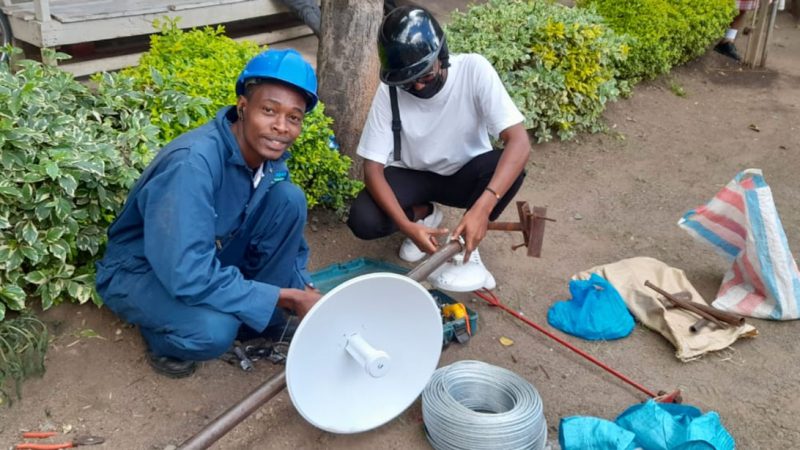By Vymala Thuron
If you are reading this blog post, you most likely take the internet for granted as an indispensable part of your daily life. Businesses, economies, and even personal relationships have all come to rely on internet connectivity to function or thrive. Yet, this is only true for around half of the world’s population.
Developing countries in Africa, low-income, and remote areas are disproportionately affected by a connectivity gap that leaves them cut off from the information economy and its benefits. Surprisingly, the answer to addressing this gap does not just depend on technology but on people and most importantly, communities.
Commercial providers can’t reach everyone
Commercial internet service providers and mobile network operators have been very successful in driving the rapid growth of especially mobile internet access in Africa in recent years. However, business considerations have often meant that that service providers prioritised connecting commercial entities and affluent or urban areas. Mobile operators have also focused on providing mobile data at tariffs that cannot support sustainable access in terms of cost.
Community networks uses new low-cost electronic networking equipment to provide small-scale community-based network services. These networks are locally owned and managed and provides affordable internet access at a fraction of at a fraction of standard commercial prices. Community networks present an opportunity for local communities to get together and define how they can support themselves to get on the irreversible ‘internet bus’, especially when traditional providers may think of them last.
Community networks need more than tech
While equipment and technical knowledge are critical, the first and most basic barrier to creating a community network is awareness. Many rural communities have yet to be made aware of the benefits that internet access can bring them, let alone of the concept of a community network to connect themselves. This means that the success of a community network is first social, then technical. The secret sauce of a successful community network is a well glued-up group of people who can act as powerful local champions to sensitise a local community to the power of community networks and the urgency of enabling internet connectivity.
AfChix believes that women can, and should, be key members of any group driving the establishment and ultimately the sustainability of community networks. Women armed with the right information and knowledge can completely change their communities and have been very successful at finding ways to cooperate to address needs around access to water, electricity, food shortage, and healthcare. When we empower women with information on the power of the internet to change their lives and how they can achieve this via community networks, they can become the best connectivity champions and agents of change.

More than connectivity
In addition to solving the problem of affordable connectivity, the community network model also provides the means to address other challenges that keep people from rural communities – and especially women – from using the internet. Poor literacy levels and a lack of even basic digital skills, such knowing how to operate a smart phone or computer, mean that many people fail to discover how the internet can add any value to their lives. For women, gender norms around using technology may also mean that they are barred from access to the devices that are available in their household or communities.
AfChix uses the establishment of community networks to roll out digital skills training, to foster community engagement and understanding of what using the internet really means, and to create a safe space for women to engage with technology. Digital skills and understanding are critical to ensuring people can truly benefit from this connectivity. Community networks provides this a powerful solution: It not only provides the means to connect the devices in a community. It connects its people.


